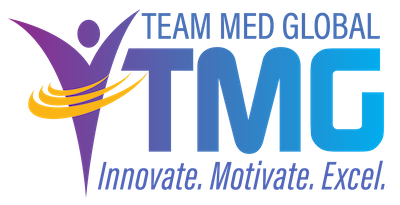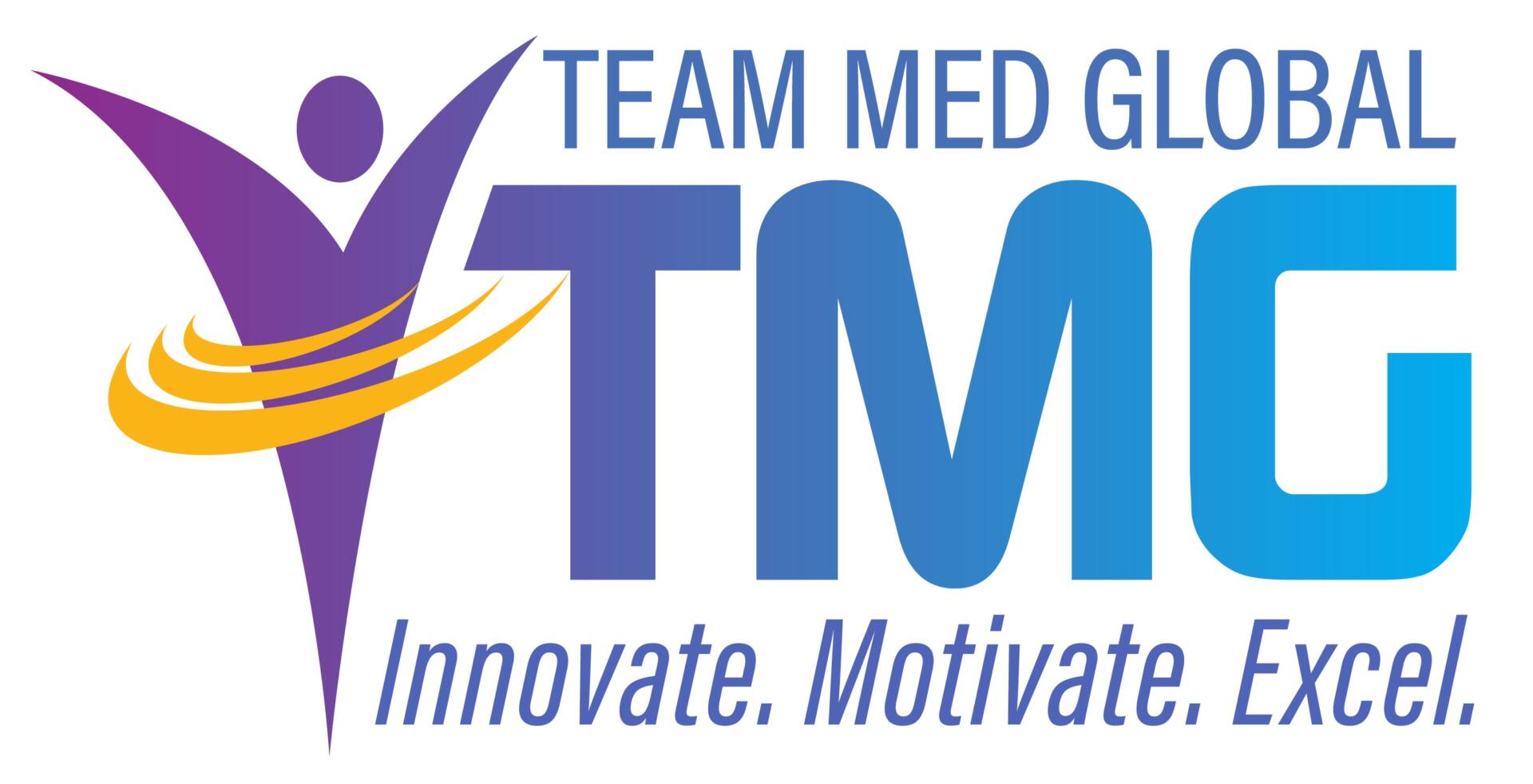 In August and September, Team Med Global’s Donna Goestenkors, CPMSM®, EMSP, and Rachelle Silva, BS, CPCS®, CPMSM®, joined forces with symplr to present “Off the Hook: Reining in Telemedicine Challenges.” Given that COVID-19 has led to an exponential increase in the use of telemedicine around the U.S., it’s no surprise that the more than 1,000 attendees posed a host of insightful questions. Here are the highlights, along with TMG’s answers.
In August and September, Team Med Global’s Donna Goestenkors, CPMSM®, EMSP, and Rachelle Silva, BS, CPCS®, CPMSM®, joined forces with symplr to present “Off the Hook: Reining in Telemedicine Challenges.” Given that COVID-19 has led to an exponential increase in the use of telemedicine around the U.S., it’s no surprise that the more than 1,000 attendees posed a host of insightful questions. Here are the highlights, along with TMG’s answers.
Do you have tips for utilizing full proxy credentialing if a facility also utilizes delegated credentialing?
When the facility performs credentialing under a delegated credentialing agreement, credentialing is between the facility and the health plan. The facility would need to enter into a sub-delegation agreement with the distant facility or telemedicine entity in order to utilize full proxy credentialing. Under the sub-delegation agreement, the facility is responsible for the annual review of the distant facility or telemedicine entity’s policies and credential files to ensure compliance with NCQA standards.
Can full proxy be used if the distant site is The Joint Commission and the originating site is AAAHC?
AAAHC does not specifically address telemedicine. The facility would need to enter into a contract with the distant facility or telemedicine entity, and they would follow all of the requirements specific to a contracted service with the governing board maintaining responsibility. A TJC-accredited facility also needs to be in compliance with CMS telemedicine standards.
Within IHS, out-of-state licensure is accepted. Is this an exception to the distant-site practitioner requirement to be licensed in the same state as the patient?
The IHS credentialing policies and procedures state, “Members of the medical staff and others who must apply for clinical privileges must hold an active and unrestricted State license, certification, or registration, as applicable, to practice in their professional field.” It does not refer to licensure in a particular state. The IHS Credentialing and Privileging Guide has some guidance with references to specific regulations: “Tribal programs require caution in interpreting applicability of the federal authority to allow clinicians to practice with out-of-state licenses.” If the provider is a federal employee assigned to a tribal program, there is no question: the federal rules apply. For clinicians employed by the tribe, however, experience has shown that attitudes vary between professional licensing boards and from state to state. The best practice for tribal sites is to obtain the view of the appropriate licensing board in writing if there is a desire to use a provider licensed in another state. While a tribe may eventually prevail in a legal dispute over licensing jurisdiction, the provider may be placed in an awkward or risky position in the meantime. Urban programs, with rare exceptions where a federal employee may be assigned to them, must have clinicians licensed in the local state.
Do you still need to pull NPDB at initial and recredentialing?
A hospital may not delegate its responsibility to query the NPDB. A hospital’s mandatory query must be submitted to the NPDB either directly by the hospital or through an authorized agent. In a full proxy situation, the distant facility or telemedicine entity is credentialing the practitioner; therefore, the responsibility of querying the NPDB falls to them.
Are telemedicine providers required to have a DEA license in the state where the patient is located?
DEA regulations require a practitioner to obtain a separate DEA registration in each state in which they dispense a controlled substance. On January 31, 2020, DHS declared a COVID-19 public health emergency that allows practitioners to dispense and prescribe controlled substances in their home states and in states that share reciprocity with their home states. The practitioner must hold a DEA registration in at least one state and they must follow the most restrictive laws if the laws differ between reciprocity states. The established patient relationship requirement has also been waived during this public health emergency.
Should criteria be listed for telemedicine/teleradiology on the DOPS?
If the facility is performing full or proxy credentialing, the privileges specific to the function of telemedicine are either listed on the specialty’s privilege form or a specific privilege form for telemedicine. As always, privilege forms are facility-specific and developed by the organized medical staff. In a full proxy situation, the facility dictates via contract what services are to be performed by the telemedicine entity, and they have their own privilege form reviewed and approved in their credentialing process. It is customary and preferred that privileging criteria (the requirements that a practitioner must meet in order to request and be considered for telemedicine privileges) are a part of the clinical privilege form.
How does DNV compare to TJC and CMS on this?
DNV standards are in compliance with the CMS telemedicine standards.
Can you give an example of how to do FPPE from the originating site?
Radiology example: The distant site practitioner reads x-rays overnight for the emergency department. The following day, the originating site radiologist does an overread of the x-rays and either confirms the read is correct or identifies an error. FPPE applied to your staff also must apply to the distant practitioner.
For full proxy, does the contract need to specifically state that all verifications, including NPDB and OIG exclusion, are to be performed by the distant site?
In a full proxy situation, the distant facility or telemedicine entity performs the full credentialing process in compliance with CMS and TJC standards. Once the practitioner is approved, your facility is notified of the approval and privileges granted. You notify the governing board, but you do not set up a separate file on these practitioners because you do not perform the credentialing.
Our current contracts do not state that, so we verify licensure, COI, NPDB and OIG exclusion on all new telemedicine providers.
You need to look at your Medical Staff Bylaws and determine if the organized Medical Staff made a choice to continue to verify the things you are verifying even though you have chosen to do full-proxy credentialing. This may also serve as an opportunity to evaluate the need to reduce duplication of effort without compromising quality.
How are one-year observations and reappointments handled with credentialing by proxy?
In full proxy, you are not credentialing or recredentialing; the distant facility or telemedicine entity is doing that process. They follow CMS standards and TJC standards regarding credentialing. You send the FPPE/OPPE and any other quality information to the telemedicine entity on the same schedule you use to review your own practitioners. They use this information in their review and approval process.
We’re a physician-owned multi-specialty clinic. What governing bodies mandate us?
A clinic is an ambulatory care environment and is licensed by the state. The clinic must abide by state and federal laws.
Does this information function the same when providers work from their home addresses?
The practitioner works for a distant facility or telemedicine entity that is performing the full-proxy credentialing. The practitioner then performs the telemedicine services from an approved location based on the distant facility or telemedicine entity organization’s policies and procedures.
We had a very difficult time getting originating sites to fully release all information they reviewed in the credentialing process.
Under full proxy, the distant facility or telemedicine entity performs the credentialing process and approves the practitioner to provide telemedicine services in compliance with CMS and/or TJC standards. Their credential file is confidential, just like your credential file is confidential, and they do not have to release the file. If you are doing a partial proxy, then the contract would dictate that the file is released from the distant facility or telemedicine entity to the originating facility to review and approve.
When there is a fully executed telehealth agreement and a schedule 1 is received at the originating site, does the originating site have to take the schedule 1 through their Department Chair, Credentials Committee, and MEC before going to the Governing Board?
If the schedule 1 refers to the listing of providers that is attached to the telemedicine contract, then the question involves whether or not they have to follow the same credentialing process for telemedicine as they do for other providers. The answer is yes, unless there is an expedited or “fast track” process outlined in the bylaws or credentialing policies and procedures.
Are you able to provide an example of Medical Staff Bylaws for credentialing by proxy?
The credentialing by proxy are not in the originating facility’s Medical Staff Bylaws. The originating facility contracts for the distant facility or telemedicine entity to provide telehealth services. The distant facility or telemedicine entity has Medical Staff Bylaws and organization policies and procedures dictating the credentialing and approval process in compliance with CMS and/or TJC in a credentialing by proxy situation.
What information is needed if you utilize “credentialing information” versus “credentialing decisions?” Massachusetts only allows credentialing information.
That is considered a partial proxy situation and the credentialing information is dictated by the contract between the originating facility and the distant facility or telemedicine entity.
Does TJC still require us to fully credential telehealth providers if the telehealth entity is not TJC accredited?
No, because the telemedicine entity is required to be in compliance with CMS. If the entity is compliant with CMS, then they are compliant with TJC.

